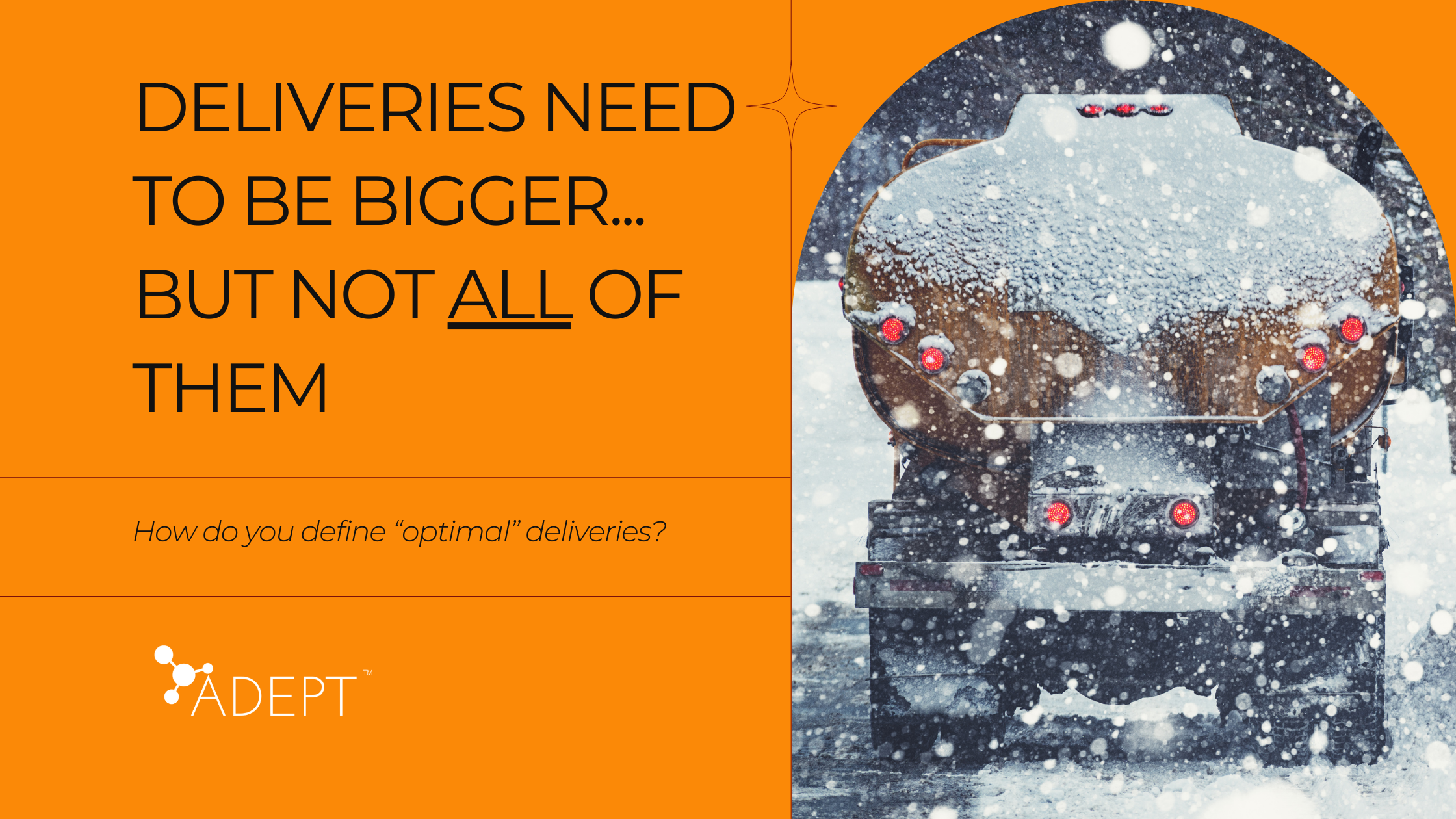We have analyzed more fuel delivery data and their impacts on profitability than any company in the country. We have studied all aspects of the puzzle, from tank size to weather forecasts; from K-factors and baseloads to new customers and old customers. We have recommended ways to improve deliveries to hundreds of owners and dispatchers. Often, we use the word “Optimal”. Sometimes we get a response along the lines of, “oh, we do that already”. If they are doing “it”, great, but what exactly is “it”? What is Optimal?
How do you define OPTIMAL, as in Optimal Delivery?
For most companies, optimal is the targeted delivery size for a specific tank size. For example, an “optimal delivery” into a 275-gallon Heating Oil tank might be 180 gallons. There are a number of reasons a targeted delivery is only 65% of the tanks’ actual capacity such as: true capacity and tank size are not the same (there is usually sludge at the bottom of the tank you want to stay away from), and the simple fact that you simply don’t want a tank to get too low and risk a run out.
If the target is 180 gallons, you probably feel pretty good in January when you make a 185 gallon delivery. You feel even better if that delivery is 190 gallons! That “Optimization” is defined as “the largest delivery into a tank without risking a runout”. 180 is better than 170, 190 is better than 180, etc.
What if we told you that that this definition of “optimal” was wrong and that a delivery of 150 gallons might be better than a delivery of 180 gallons? You might think we are crazy – who would purposefully deliver FEWER gallons when they could deliver more? Let’s take a look at 2 Customers:
Customer A:
- 275 Gallon HO Tank
- 200 gallons in the tank
- Reserve level set at 70 gallons
- Next delivery to be made after 130 gallons are used
- K-factor set to 5
- Next delivery in 650 HDDs, which will occur on Jan 2
Customer B:
- 275 Gallon HO Tank
- 120 gallons in the tank
- Reserve level set at 70 gallons
- Next delivery to be made after 50 gallons are used
- K-factor set to 13
- Next delivery in 650 HDDs, which will also occur on Jan 2
Sounds simple, right?
This is K-factor delivering 101.
However, what if you delivered to Customer B (K of 13) right now, not in 650 HDDs? That’s right, when the tank had 120 gallons and would only get a “non-optimal” delivery of 130 gallons instead of 180. Crazy? Maybe not. When the “early” delivery is made in early December, the company has excess capacity and daily driver shifts don’t go into overtime. In addition, due to the high K-factor, this tank won’t need another delivery for 2,340 HDDs (180 * 13), which will be sometime in March! If you can eliminate a January (a/k/a “peak” delivery), would you? What if you considered the “flattening of the peak” on the 30% of your customers who have Ks that are higher than 8? How does not needing as many trucks in January (or not as many trucks ever) sound? How would it sound if a system automated the deliveries to factor in not only the costs of an individual delivery but also the costs of having delivery vehicles?
Can you calculate those costs? Can you determine which tanks get delivered – on-time or early, but always “OPTIMAL” to save on your delivery and fleet costs?
Need help figuring these numbers out? Give us a call or send us a quick email.

